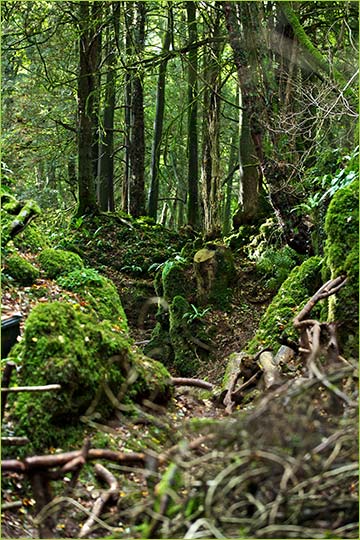The Wood - A Brief History
Puzzlewood is famous for its strange rock formations, secret caves and ancient trees. This magical and otherworldly environment must have kept locals guessing for centuries as to how it came about – it’s surely how Puzzlewood got its name.
How was the landscape formed?
The geological features that give Puzzlewood its distinctive character are known as scowles. These remarkable rocky formations developed millions of years ago as water erosion of carboniferous limestone created natural underground cave systems. Over time, uplift and erosion exposed those cave systems at the surface.
The mystery of Puzzlewood’s hidden treasure
The area was exploited by Iron Age settlers through to Roman times for the extraction of iron ore. Evidence of Roman occupation in and around Puzzlewood is supported by an exciting discovery of a hoard of over 3,000 Roman coins dating back to 3BC, which had been hidden in the scowles.
Puzzlewood as a visitor attraction
Over many centuries, nature reclaimed the old workings as moss covered the rocks and trees became established, so creating a mystical landscape. In the early 1800s a local landowner laid down a mile of meandering pathways through the trees and gulleys to open up this ancient forest, originally for the amusement of his own family, friends and children. Puzzlewood opened to the public in the early 1900s, with an honesty box at the gate for the benefit of the local church. Since then, Puzzlewood has remained essentially unchanged with the same pathways and bridges as in earlier times, but with the addition of other onsite facilities.
A Peek into Puzzlewood provides more detail about Puzzlewood’s origins.







